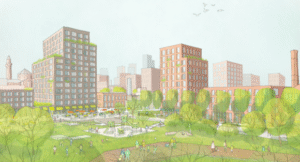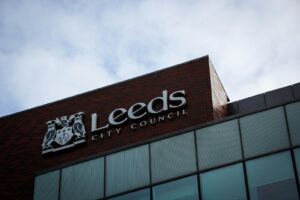It’s 2024 and more robots are being integrated into our everyday life. However, researchers from the Singapore University of Technology and Design (SUTD) claim we need cheaper alternatives to test their interactions with the built environment.
Associate Professor Mohan Rajesh Elara from SUTD is the lead researcher one this project, which began after Professor Elara and his team realised current methods of examining robot interaction with built environments – including cities, buildings and walkways – are too time-consuming, expensive and labour heavy.
To address this, the team introduced the use of digital twins – a digital representation of a physical object, person or process, contextualised in a digital version of its environment.
In a statement, Professor Elara said: ‘Ensuring that robots can navigate and operate effectively within built environments is crucial for their widespread adoption and acceptance.
‘The digital twin approach offers several key advantages, including the ability to simulate real-world scenarios, enable virtual testing of robot interactions, and provide insights into compliance with design guidelines before physical implementation.’
Within the study, researchers explained they used a methodology to test their idea and it was divided into three phases: documentation, digitisation and design analysis. Details about this process, alongside the full study, can be found in the research paper ‘Enhancing robot inclusivity in the built environment: A digital twin-assisted assessment of design guideline compliance’.
In one case study, Professor Elara used digital twins to test four different cleaning robots in six different environments that adhered to Accessibility Design Guidelines.
The test found that of the four robots, one completed the most goals and performed the best in the simulated environments. The team noted that robot inclusiveness doesn’t always translate to robot perform efficiency, but than an inclusive environment does promote better accessibility for the machines.
As more and more robots are being used in urban applications such as logistics, cleaning and building maintenance, this research aims to help improve design guidelines for built environments to accommodate the use of robots.
Within the building sector, reports have surfaced about robots taking over monotonous construction tasks, such as overhead hammer drilling and repetitive heavy material transport. It is hoped that by taking over such tasks, workers won’t face as many long-term health issues that can spark from exposure to too much loud noise and dust.
Following the completion of this study, researchers from SUTD are looking to extend the current methods and generate the infrastructure modifications required to improve the accessibility of mobile robots through the use of AI, design and technology. What’s more, Professor Elara also hopes to develop a set of design guidelines for building robot-friendly infrastructure.
Stories similar to this one can be found on our sister title, infotecNEWS – a website that covers all things technology.
AI ain’t all bad: boosting tenants housing engagement experience
















Leave a Reply